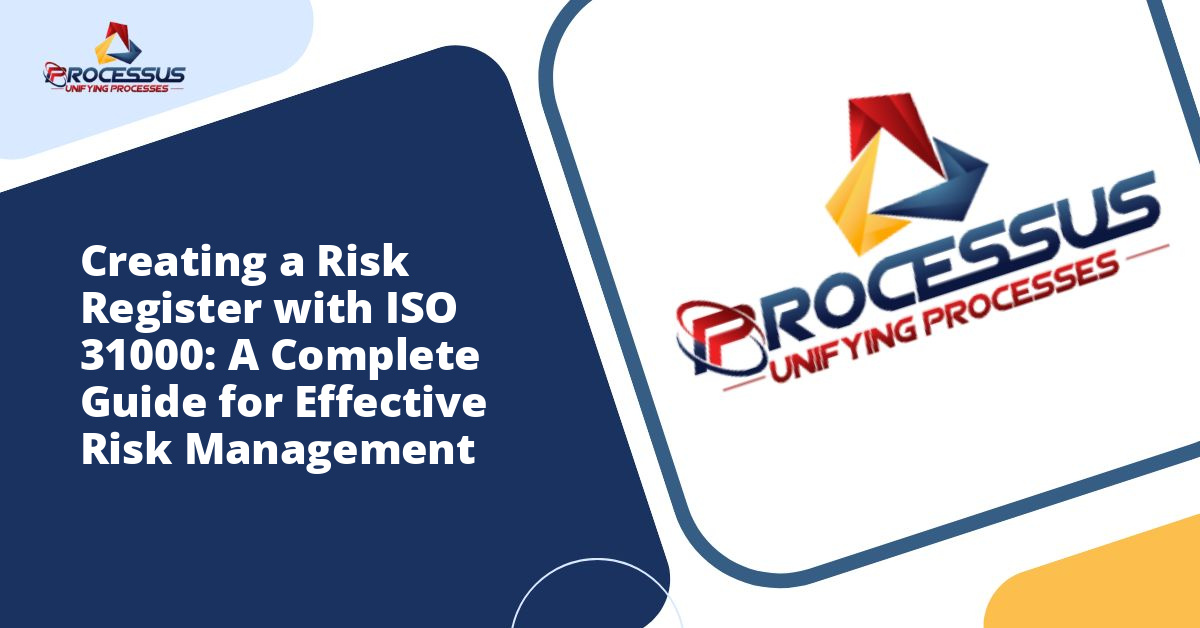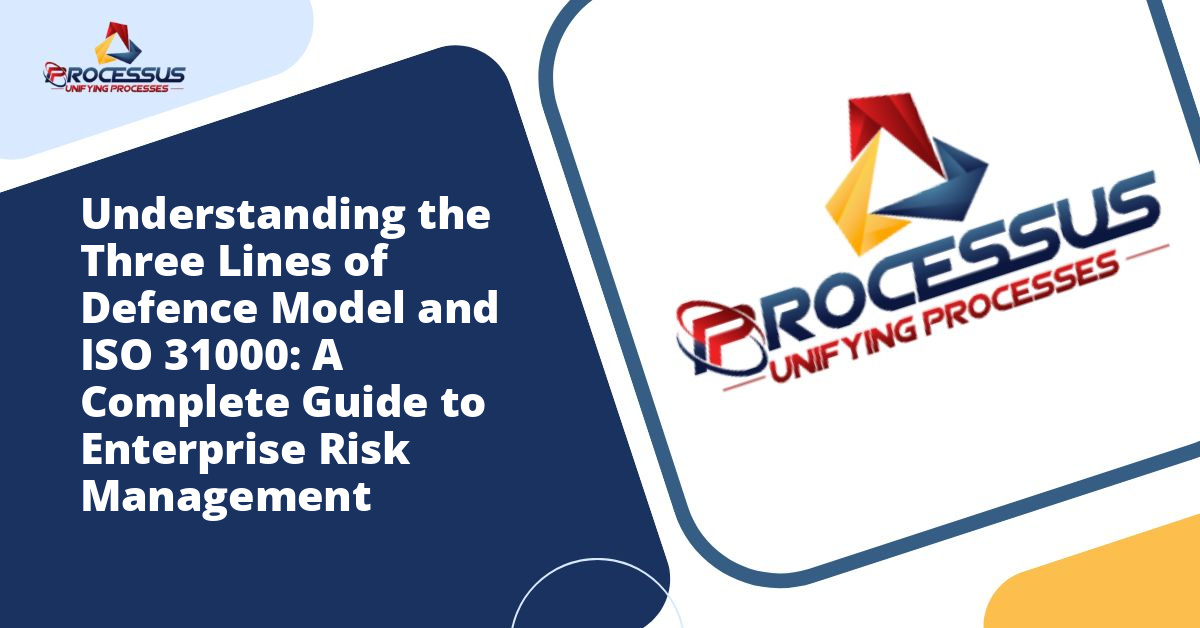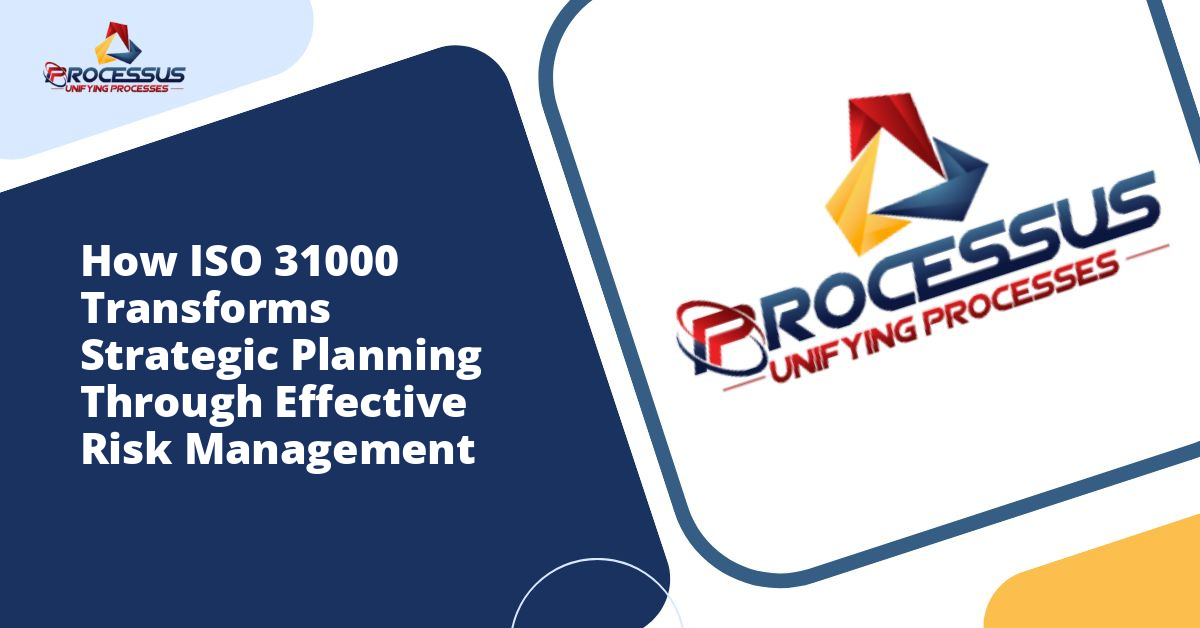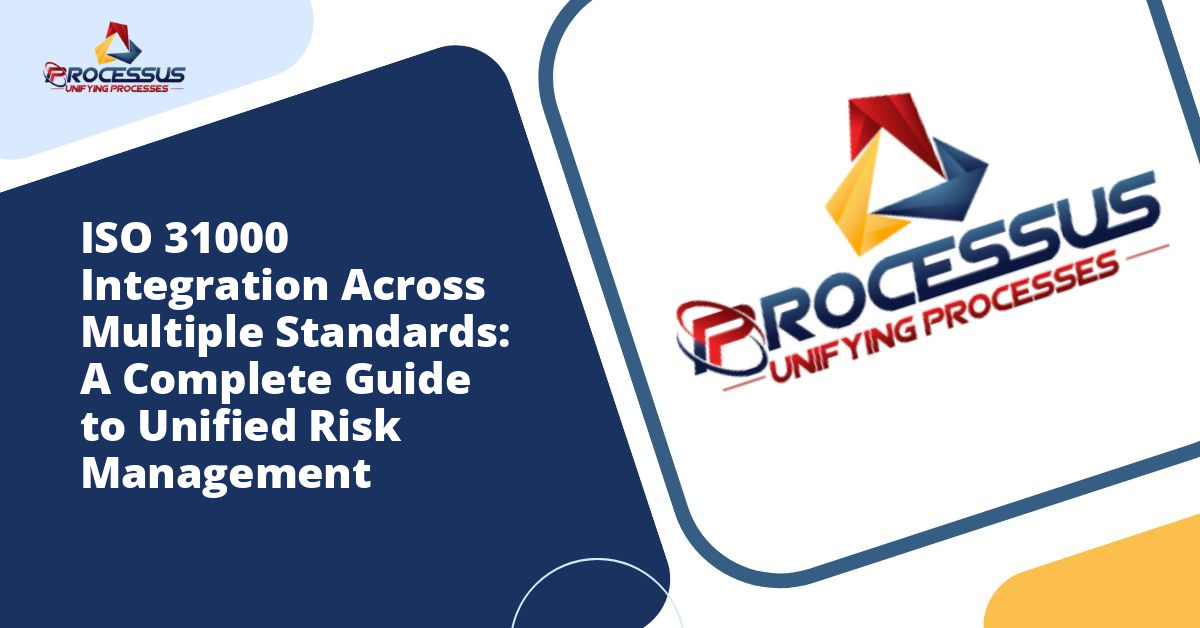Risk management stands as a cornerstone of successful organizational operations, and creating a robust risk register using the ISO 31000 framework provides businesses with a systematic approach to identifying, analyzing, and managing potential threats. This comprehensive guide walks you through the process of developing an effective risk register that aligns with international standards while serving your organization’s unique needs.
Understanding ISO 31000 and Its Role in Risk Management
ISO 31000 represents the international standard for risk management, providing organizations with principles, framework, and processes for managing risk effectively. Published by the International Organization for Standardization, this standard applies to all types of organizations regardless of size, industry, or sector. Unlike prescriptive regulations, ISO 31000 offers flexible guidelines that organizations can adapt to their specific contexts and requirements. You might also enjoy reading about ISO 31000 vs ISO 27005: A Complete Guide to Choosing the Right Risk Management Framework.
The beauty of ISO 31000 lies in its universal applicability. Whether you manage a small startup, a multinational corporation, a government agency, or a nonprofit organization, the principles outlined in this standard can help you establish a risk management culture that protects value, integrates into organizational processes, and supports informed decision-making. You might also enjoy reading about ISO 31000 Risk Management Framework Implementation: A Complete Guide for Organizations.
At its core, ISO 31000 emphasizes that risk management should be systematic, structured, and timely. It recognizes that organizations face both internal and external factors that create uncertainty about achieving objectives, and these uncertainties can have positive or negative effects. The standard provides a framework for addressing these uncertainties through a consistent and comprehensive approach. You might also enjoy reading about Understanding Risk Appetite and Tolerance: A Complete Guide Using ISO 31000 Framework.
What Is a Risk Register and Why Does It Matter
A risk register serves as a living document that records identified risks, their characteristics, and information about how they should be managed. Think of it as your organization’s risk management command center, where all relevant information about potential threats and opportunities comes together in an organized, accessible format.
This critical tool helps organizations maintain visibility over their risk landscape, enabling leaders and stakeholders to make informed decisions based on current risk profiles. The register facilitates communication across departments, ensures accountability for risk management activities, and provides a historical record that supports continuous improvement efforts.
When properly maintained, a risk register becomes more than just a compliance document. It transforms into a strategic asset that guides resource allocation, shapes business strategies, and enhances organizational resilience. The register helps answer fundamental questions: What could go wrong? What could go right? How likely are these scenarios? What would be their impact? What are we doing about them?
Key Components of an ISO 31000-Aligned Risk Register
Creating an effective risk register requires careful attention to several essential components. Each element plays a specific role in helping your organization understand and manage its risk profile comprehensively.
Risk Identification Information
The foundation of any risk register begins with basic identification information. This includes a unique risk identifier or reference number that allows for easy tracking and reference throughout the organization. Each risk should have a clear, descriptive title that immediately communicates its nature to anyone reading the register.
Additionally, you should document the risk category, which groups similar risks together and helps identify patterns or concentrations of risk in particular areas. Common categories include strategic risks, operational risks, financial risks, compliance risks, and reputational risks. The category system you develop should reflect your organization’s specific context and industry characteristics.
Risk Description and Context
A comprehensive description explains the risk in detail, providing enough information for stakeholders to understand its nature without requiring additional documentation. This description should articulate what the risk is, what causes it, and under what circumstances it might materialize.
Context information connects the risk to broader organizational objectives and activities. This section should explain which business processes, projects, or strategic goals the risk affects. Understanding this connection helps prioritize risks based on their alignment with what matters most to the organization.
Risk Analysis Components
Risk analysis forms the heart of your risk register, providing quantitative or qualitative assessments that inform decision-making. The likelihood assessment estimates how probable it is that the risk will occur within a specific timeframe. Organizations typically use scales ranging from rare to almost certain, with clear definitions for each level.
Impact assessment evaluates the consequences if the risk materializes. This evaluation should consider multiple dimensions, including financial impact, operational disruption, reputational damage, regulatory consequences, and safety implications. Like likelihood, impact typically uses a scaled approach, ranging from insignificant to catastrophic.
The risk level or rating combines likelihood and impact to produce an overall assessment of risk significance. Many organizations use a risk matrix that multiplies or otherwise combines these factors to generate ratings such as low, moderate, high, or critical. This rating helps prioritize which risks require immediate attention and which can be monitored with less intensive management efforts.
Risk Treatment and Response
The risk register must document how the organization plans to address each identified risk. ISO 31000 recognizes several treatment options: avoiding the risk by discontinuing the activity that creates it, modifying the likelihood or impact through controls and mitigation measures, sharing the risk with another party through insurance or partnerships, or retaining the risk based on informed acceptance.
For each risk, document specific control measures already in place and additional treatments planned for implementation. Include details about who owns responsibility for managing the risk, what resources have been allocated, and when treatment actions should be completed. This information transforms the risk register from a passive record into an active management tool.
Monitoring and Review Information
Risk management is not a one-time activity but an ongoing process. Your risk register should include information about how and when each risk will be reviewed. Document key risk indicators that provide early warning when risk profiles are changing, and establish review frequencies appropriate to each risk’s characteristics.
Recording the status of risks and their treatments helps track progress and demonstrates the value of risk management activities. This historical information proves invaluable for learning and improvement, helping organizations refine their risk management approaches over time.
Steps to Create Your Risk Register Using ISO 31000 Principles
Step 1: Establish the Context
Before creating your risk register, take time to understand your organization’s context thoroughly. This involves identifying internal and external factors that influence objectives, understanding stakeholder expectations, and clarifying the scope of your risk management activities. Consider the legal, regulatory, social, cultural, and competitive environment in which you operate.
Define your risk criteria at this stage. How will you measure likelihood and impact? What risk levels are acceptable? What thresholds trigger escalation or specific management actions? Establishing these parameters upfront ensures consistency and objectivity throughout the risk identification and assessment process.
Step 2: Identify Risks Systematically
ISO 31000 emphasizes comprehensive and structured risk identification. Employ multiple techniques to ensure you capture risks across all organizational areas. Brainstorming sessions bring diverse perspectives together, helping identify risks that individual contributors might overlook. Interviews with key personnel provide deep insights into operational risks and emerging concerns.
Document analysis reviews past incidents, audit findings, industry reports, and performance data to identify patterns and recurring issues. Scenario analysis explores potential future events and their implications. Process mapping examines workflows to identify vulnerabilities and failure points. Checklist-based approaches ensure consistency, especially for compliance-related risks.
Engage stakeholders throughout this process. Different perspectives reveal different risks, and inclusive identification processes build buy-in for subsequent risk management activities. Remember that risk identification should capture both threats and opportunities, as ISO 31000 recognizes that uncertainty can create positive as well as negative outcomes.
Step 3: Analyze and Evaluate Risks
With risks identified, conduct thorough analysis using the criteria established during context setting. For each risk, assess likelihood and impact carefully, drawing on available data, expert judgment, and relevant models or analytical tools. Document the reasoning behind your assessments to support transparency and facilitate future reviews.
Evaluate risks by comparing assessed risk levels against your predetermined criteria. This evaluation determines which risks require treatment, which can be accepted, and which require escalation to senior leadership. The evaluation process should consider existing controls, as these influence both likelihood and impact.
Some organizations conduct both inherent and residual risk assessments. Inherent risk reflects the risk level without any controls, while residual risk accounts for existing mitigation measures. This dual perspective helps organizations understand their control effectiveness and identify where additional treatments might be needed.
Step 4: Document Risks in the Register
Transfer your risk information into a structured register format. While elaborate software solutions exist, many organizations successfully manage risks using spreadsheet-based registers. The format matters less than the content quality and how the register integrates into organizational processes.
Ensure your register captures all the components discussed earlier: identification information, descriptions, analysis results, treatment plans, ownership, and review schedules. Use clear, concise language that stakeholders throughout the organization can understand. Avoid jargon unless your audience shares specialized knowledge.
Consider how different stakeholders will use the register. Executives might need summary dashboards showing risk distributions and key risk indicators. Operational managers might need detailed treatment plans and action items. Board members might require trend information and assurance about risk management effectiveness. Your register structure should support these varied needs.
Step 5: Implement Risk Treatments
A risk register provides limited value if documented treatments remain unimplemented. Develop detailed action plans for each treatment, assigning clear responsibilities, allocating necessary resources, and establishing realistic timelines. Integration with project management systems and operational workflows helps ensure treatments receive appropriate attention and priority.
Monitor implementation progress regularly, addressing obstacles and adjusting plans as circumstances change. Risk treatment often involves competing priorities and resource constraints, so maintaining leadership support and organizational commitment remains essential throughout implementation.
Step 6: Monitor, Review, and Update
ISO 31000 emphasizes that monitoring and review should be integral to risk management. Establish regular review cycles for your risk register, with frequency determined by risk levels, organizational changes, and external developments. High-priority risks might warrant monthly reviews, while lower-level risks could be reviewed quarterly or annually.
During reviews, reassess likelihood and impact based on current information. Evaluate treatment effectiveness and adjust approaches as needed. Remove risks that no longer apply and add newly identified risks. Update stakeholders on significant changes and emerging risk trends.
Use key risk indicators to provide early warning of changing risk profiles. These metrics, tracked between formal reviews, help organizations respond proactively rather than reactively. Examples might include customer complaint trends, staff turnover rates, system downtime, compliance violations, or market volatility measures.
Best Practices for Risk Register Management
Maintain Simplicity and Usability
Resist the temptation to create an overly complex register that becomes burdensome to maintain. Focus on information that genuinely supports decision-making and risk management activities. A simple register that people actually use delivers far more value than an elaborate system that becomes neglected due to its complexity.
Ensure Executive Support and Engagement
Risk management succeeds only with leadership commitment. Regularly present risk register information to executives and board members, demonstrating how risk management supports strategic objectives. Leadership engagement signals to the broader organization that risk management matters and deserves appropriate attention and resources.
Foster a Risk-Aware Culture
The risk register reflects organizational culture as much as it documents specific threats. Encourage open communication about risks without fear of blame or punishment. Recognize and reward proactive risk identification and management. Make risk considerations a routine part of decision-making processes at all organizational levels.
Integrate with Other Management Systems
Your risk register should not exist in isolation. Connect it with strategic planning, performance management, quality systems, project management, and compliance activities. This integration ensures consistency, reduces duplication, and helps stakeholders see risk management as an enabler rather than a separate bureaucratic requirement.
Leverage Technology Appropriately
Technology can enhance risk register management through automated workflows, collaborative features, analytical capabilities, and reporting tools. However, technology should support your risk management process rather than dictate it. Choose solutions that fit your organizational needs, resources, and capabilities. Remember that effective risk management depends more on culture and processes than on sophisticated software.
Maintain Confidentiality and Security
Risk registers contain sensitive information about organizational vulnerabilities and strategic concerns. Implement appropriate access controls, ensuring stakeholders can access information they need while protecting confidential details from inappropriate disclosure. Consider tiered registers with varying detail levels for different audiences.
Common Challenges and How to Overcome Them
Organizations frequently encounter challenges when creating and maintaining risk registers. Recognizing these obstacles helps you prepare strategies to address them effectively.
Risk identification often suffers from incomplete coverage, with some organizational areas receiving insufficient attention. Counter this by using diverse identification techniques, engaging stakeholders across all functions, and regularly reviewing identification processes for gaps.
Subjectivity in risk assessment can lead to inconsistency and bias. Provide clear definitions for likelihood and impact scales, offer calibration examples, and encourage dialogue when assessments differ significantly. Over time, organizational experience improves assessment consistency.
Risk registers sometimes become static documents that fail to reflect current realities. Combat this through scheduled reviews, automated reminders, and integration with ongoing management activities. Make register updates part of routine processes rather than special events.
Insufficient resources for risk treatment frustrate risk owners and undermine risk management credibility. Prioritize treatments based on risk levels and organizational objectives, and present clear business cases for necessary resources. Accept that not all risks can be treated simultaneously, but ensure high-priority risks receive appropriate attention.
Measuring Risk Register Effectiveness
Evaluating your risk register’s effectiveness ensures continuous improvement and demonstrates value to stakeholders. Consider metrics such as the percentage of identified risks with documented treatments, the completion rate for planned risk treatment actions, and the frequency of risk register reviews and updates.
Track how often the register informs decision-making and whether it prevents incidents or enables opportunities. Survey stakeholders about register usefulness and identify improvement opportunities. Monitor the maturity of your risk management processes over time, observing progression from reactive to proactive approaches.
Ultimately, an effective risk register contributes to achieving organizational objectives with greater confidence and fewer surprises. It supports resilience, enhances stakeholder confidence, and provides assurance that the organization understands and actively manages the uncertainties it faces.
Conclusion
Creating a risk register aligned with ISO 31000 principles provides organizations with a powerful tool for navigating uncertainty and protecting value. By systematically identifying, analyzing, evaluating, and treating risks, organizations build resilience and enhance their ability to achieve objectives despite challenges and disruptions.
The journey toward effective risk management begins with a single step: committing to systematic risk identification and documentation. From there, continuous improvement and stakeholder engagement gradually strengthen risk management capabilities and organizational culture. Your risk register evolves from a compliance document into a strategic asset that guides decisions, allocates resources, and builds confidence among leaders, employees, and external stakeholders.
Remember that ISO 31000 provides principles and guidelines rather than rigid requirements. Adapt these concepts to your organizational context, and focus on practical value rather than perfect compliance. Start simply if needed, and expand your risk register’s sophistication as your capabilities and needs grow. The most important factor is not the register’s format or complexity but rather your organization’s commitment to using it as a genuine management tool that influences actions and improves outcomes.
With dedication, leadership support, and continuous refinement, your ISO 31000-aligned risk register becomes an indispensable component of organizational success, helping you anticipate challenges, seize opportunities, and navigate the uncertainties inherent in today’s dynamic business environment.







